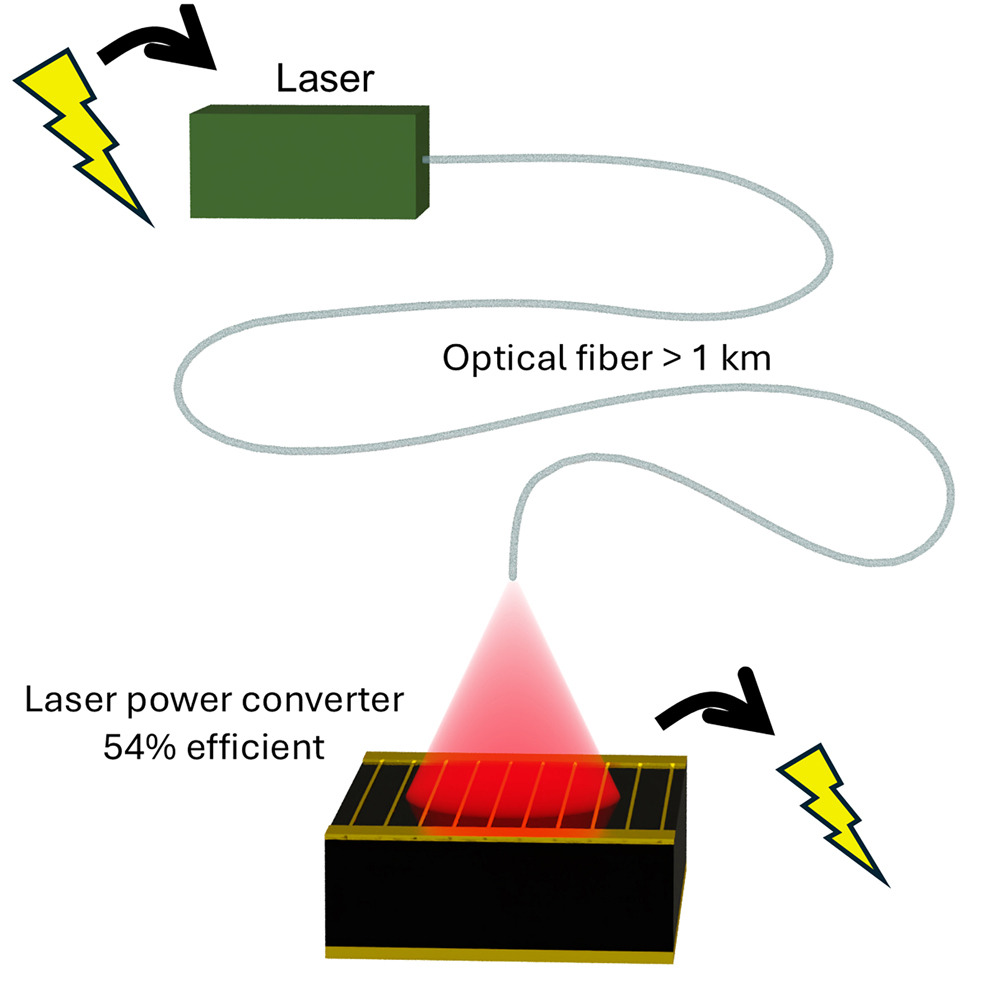News #21
New laser power converters transmit power further and better
In a joint research effort, scientists from the University of Ottawa, the National Research Council Canada NRC and Fraunhofer Institute for Solar Energy Systems ISE developed photonic power converters which convert 1446 nanometer laser light into electrical power with unprecedented 53.6 percent efficiency and an output voltage above 2 volts. These advancements pave the way for long-distance power transmission via optical fibers, for example in telecommunications, as well as free space applications. The results have recently been published open access in Cell Reports Physical Science.

Researcher from the University of Ottawa, the National Research Council Canada and Fraunhofer ISE in Germany managed to design and fabricate multi-junction photovoltaic devices based on Indium Gallium Arsenide Phosphide (InGaAsP) that exceed 50 percent efficiency under 1.446 micrometer laser light.
Optical fibers can be used to transmit power using a photovoltaic cell to convert the light into electricity. “In traditional power over fiber systems, for longer range applications most of the laser light is lost in the fiber,” explains Professor Karin Hinzer of the University of Ottawa’s who leads the Canadian activities in this project. “With our new devices, the distance can be much longer.”
“That makes this technology interesting for applications in telecommunications where laser power transmission is essential for both power and data delivery” says Dr. Henning Helmers, head of department III-V Photovoltaics and Concentrator Technology at Fraunhofer ISE and lead of the German activities in this binational R&D project.
The devices were jointly designed by the project partners. The team at Fraunhofer ISE grew and fabricated the InGaAsP devices. NRC scientists were involved in the modelling of the converters. Researchers at the University of Ottawa worked on modeling and measured their performance.
Last modified: